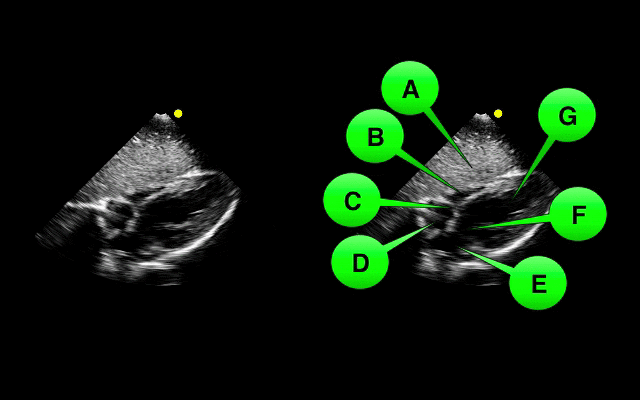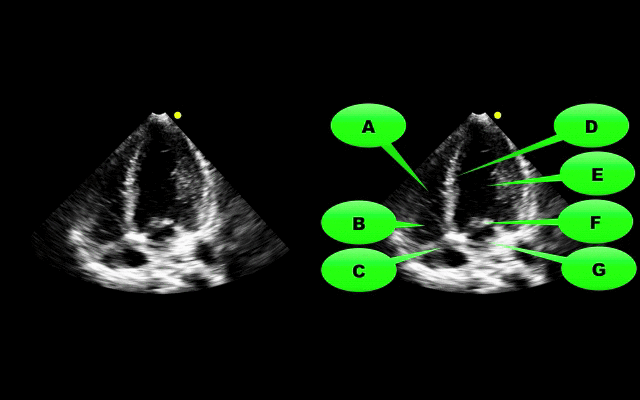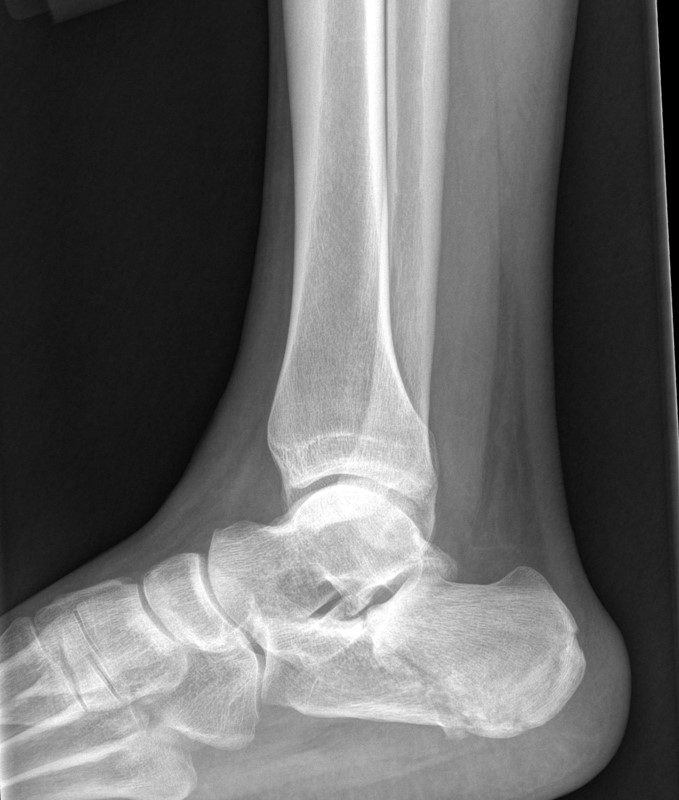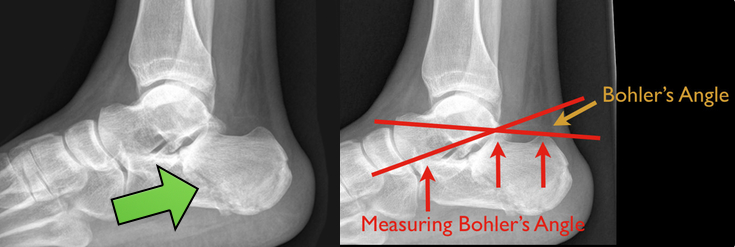Category: Pharmacology & Therapeutics
Keywords: oral anticoagulant,edoxaban,atrial fibrillation,stroke,Xa (PubMed Search)
Posted: 12/5/2013 by Ellen Lemkin, MD, PharmD
Click here to contact Ellen Lemkin, MD, PharmD
It has linear, predictable pharmacokinetics, achieves maximal concentration within 1-2 hours, is 50% renally excreted, and has a half life is 9-11 hours.
Edoxaban was evaluated in a recent trial comparing warfarin in patients with atrial fibrillation.
The primary end point or first stroke or systemic pulmonary embolic event occurred in 1.5% with warfarin, compared with 1.18% in the high dose edoxaban (HR 0.79; 97.5% CI 0.63-0.99, P<0.001). In the intention to treat there were trends favoring high dose edoxaban and unfavorable trends with the lower dose.
The principal safety end point of major bleeding occurred in 3.43% with warfarin versus 2.75% with high dose edoxaban (HR 0.86; 95% CI 0.71-0.91, P<0.001).
Bottom line: Both high dose (60 mg) and low dose (30 mg) edoxaban were non-inferior to warfarin with prevention of stroke or systemic emboli, and were associated with significantly lower rates of bleeding and death from cardiovascular causes.
Currently it is approved for use in Japan.
Edoxaban versus Warfarin in Patients with Atrial Fibrillation. Giuliano, RP et al. NEJM Nov 28, 2013; 369(22):2093-2104.
Category: International EM
Keywords: Vaccine, Meningitis, Neisseria meningitidis, Outbreak (PubMed Search)
Posted: 12/4/2013 by Andrea Tenner, MD
Click here to contact Andrea Tenner, MD
General Information:
Fever and headache or rash in those with close contacts from the affected universities should be considered for rapid, empiric meningococcal treatment.
CDC Health Alert Network, Nov. 27, 2013 http://emergency.cdc.gov/HAN/han00357.asp
Category: Critical Care
Keywords: Mechanical Ventilation, autoPEEP, PEEP, obstructive lung disease, critical care (PubMed Search)
Posted: 12/2/2013 by John Greenwood, MD
(Updated: 12/3/2013)
Click here to contact John Greenwood, MD
Vent Management: Finding the AutoPEEP!
OK, so we all know not to, "...Fall asleep on Auto-PEEP" thanks to Dr. Mallemat's pearl that can be seen here. But now the question is, how do you know if your patient is air-trapping?
There are 3 ways you can look for evidence of Auto-PEEP on the ventilator:
Blanch L, Bernabé F, Lucangelo U. Measurement of air trapping, intrinsic positive end-expiratory pressure, and dynamic hyperinflation in mechanically ventilated patients. Respir Care. 2005;50(1):110-23.
Category: Visual Diagnosis
Posted: 12/2/2013 by Haney Mallemat, MD
Click here to contact Haney Mallemat, MD
Which view of the heart is this and can you name the structures from A-G?

1. Subcostal or Subxiphoid view; this view is obtained by placing the probe under the ribs with the patient supine. The liver is used as an acoutic window to image the heart.
2. Name the items labeled A-G:

Follow me on Twitter (@criticalcarenow) or Google+ (+criticalcarenow)
Category: Cardiology
Keywords: Cardiac Transplant (PubMed Search)
Posted: 12/1/2013 by Semhar Tewelde, MD
(Updated: 8/28/2014)
Click here to contact Semhar Tewelde, MD
ECG Following Cardiac Transplant
Chou's Electrocardiography in Clinical Practice: Adult and Pediatric 6th Edition
Category: Orthopedics
Keywords: Posterior, Dislocation, Shoulder (PubMed Search)
Posted: 11/30/2013 by Michael Bond, MD
(Updated: 12/14/2025)
Click here to contact Michael Bond, MD
Posterior Shoulder Dislocations

(A posterior shoulder dislocation will show the humeral head displayed superiorly in the image away from the clavicle which is the inferior most bone)
Some things to look for on the AP view that will suggest a posterior shoulder dislocation:
Life in the Fast Lane as a great discussion of posterior shoulder dislocations at http://lifeinthefastlane.com/posterior-shoulder-dislocation/
Best way to make the diagnosis --- suspect it and get an axillary view.
Category: International EM
Keywords: Pediatric, Trauma, Ultrasound, Abdomen, International (PubMed Search)
Posted: 11/27/2013 by Andrea Tenner, MD
Click here to contact Andrea Tenner, MD
Bottom Line: In a stable pediatric abdominal trauma victim, combined FAST and LFT results are an effective screening tool to evaluate for intra-abdominal injury.
Kenefake et al, Pediatric Emergency Medicine Nuances in Pediatric Truama. Emergency Medicine Clinics of North America, August 2013, 31;3:627-652
Krug E. Injury: a leading cause of the global burden of disease. Geneva: World Health Organization; 1999 (WHO/HSC/PVI/99.11).
Retzlaff et al, Is sonography reliable for the diagnosis of pediatric blunt abdominal trauma. J of Ped Surg 2010; 45: 912-915
Sola et al, Pediatric FAST and Elevated Liver Transaminases: An Effective Screening Tool in Blunt Abdominal Truama. J of Surgical Research 2009; 157;1: 103-107
Category: Critical Care
Posted: 11/26/2013 by Haney Mallemat, MD
Click here to contact Haney Mallemat, MD
The management of alcohol withdrawal syndrome (AWS) includes supportive care focusing on the ABC’s and administration of benzodiazepines (BDZ).
While BDZ are effective in the treatment of AWS, some patients may require very high doses of BDZ to control symptoms (tachycardia, hypertension, diaphoresis, etc.); unfortunately, high-doses of BDZ may lead to suppression of the respiratory drive and endotracheal intubation.
Dexmedetomidine (DEX) is a sedative agent that is an intravenous alpha2-agonist (it's like clonidine); it reduces sympathetic outflow from the central nervous system and it may help treat withdrawal syndromes. The major benefit of DEX is that it does not suppress the respiratory drive, thus intubation is not required.
Smaller trials and case series have shown that patients with AWS who were treated with BDZ in addition to DEX had better symptom control, lower overall BDZ doses, and less respiratory depression/intubation.
Bottom-line: While more trials are needed, consider adding DEX for patients with AWS who require high-doses of BDZ.
Follow me on Twitter (@criticalcarenow) or Google+ (+criticalcarenow)
Category: Visual Diagnosis
Posted: 11/25/2013 by Haney Mallemat, MD
Click here to contact Haney Mallemat, MD
What view of the heart is this and can you name everything from A-G?

1. Apical-four chamber view; this view is obtained by placing the probe in the 4-5th intercostal space at the anterior axillary-line. The patient can be placed in left lateral decubitus to improve imaging.
2. Name the items labeled A-G:

Follow me on Twitter (@criticalcarenow) or Google+ (+criticalcarenow)
Category: Cardiology
Keywords: Therapeutic Hypothermia, ROSC, Cardiac Arrest, Resuscitation (PubMed Search)
Posted: 11/23/2013 by Ali Farzad, MD
(Updated: 3/10/2014)
Click here to contact Ali Farzad, MD
Want more emergency cardiology pearls? Follow me @alifarzadmd
Category: Orthopedics
Keywords: bronchospasm, asthma, exercise-induced laryngeal obstruction (PubMed Search)
Posted: 11/23/2013 by Brian Corwell, MD
Click here to contact Brian Corwell, MD
Unexplained respiratory symptoms during exercise are often incorrectly considered secondary to exercise induced asthma/bronchospasm.
An important diagnosis on the differential should be exercise-induced laryngeal obstruction (EILO).
Of 91 athletes referred for asthma workup, 35% had EILO.
The presence of inspiratory symptoms did not differentiate athletes with and without EILO.
61% of athletes with EILO used regular asthma medication at referral.
Category: Pediatrics
Keywords: trauma, cardiac arrest, return of spontaneous circulation (PubMed Search)
Posted: 11/22/2013 by Mimi Lu, MD
Click here to contact Mimi Lu, MD
Category: Toxicology
Keywords: rivaroxaban, dabigatran (PubMed Search)
Posted: 11/21/2013 by Fermin Barrueto
(Updated: 12/14/2025)
Click here to contact Fermin Barrueto
Reversal of the new anticoagulants rivaroxaban (Xarelto) and dabigatran (Pradaxa) has been challenging particularly in the ED setting with no definitive reversal agent. Intracerebral hemorrhage or critical GI bleed management becomes challenging and worsens mortality.
There is growing literature that states activated prothrombin complex concentrate or non-activated PCC may reverse these new anticoagulants. A volunteer study (1) showed its efficacy and concensus workgroups are now recommending aPCC as first line therapy(2). The search goes on for a reliable reversal agent for these new anticoagulants which were suppose to solve more problems instead of create new ones.
1) Eerenberg ES, Kamphuisen PW, Sijpkens MK, Meijers JC, Buller HR, Levi M. Reversal of rivaroxaban and dabigatran by prothrombin complex concentrate: a randomized, placebo-controlled, crossover study in healthy subjects. Circulation. 2011 Oct 4;124(14):1573-9. 2) Pernod G, Albaladejo P, Godier A, Samama CM, Susen S, Gruel Y, Blais N, Fontana P, Cohen A, Llau JV, Rosencher N, Schved JF, de Maistre E, Samama MM, Mismetti P, Sié P; Working Group on Perioperative Haemostasis. Management of major bleeding complications and emergency surgery in patients on long-term treatment with direct oral anticoagulants, thrombin or factor-Xa inhibitors: proposals of the working group on perioperative haemostasis (GIHP) - March 2013. Arch Cardiovasc Dis. 2013 Jun-Jul;106(6-7):382-93.
Category: International EM
Keywords: meningoccocus, Neisseria meningitidis, global, infectious disease (PubMed Search)
Posted: 11/20/2013 by Andrea Tenner, MD
(Updated: 12/14/2025)
Click here to contact Andrea Tenner, MD
General Information:
Nisseria meningitidis is the common culprit in epidemic meningitis. Serogroup B is currently causing an outbreak on the Princeton campus. So what are the serogroups and why are they important?
Six main serogroups cause disease: A, B, C, Y, X, W-135.
Two quadrivalent vaccines are currently licensed in the US that cover Serogroups A, C, Y, and W-135.
Relevance to the EM Physician: The currently available vaccines in the US cover the majority of serogroups of meningococcus, however, Serogroup B (currently causing an outbreak at Princeton) is not covered, nor is Serogroup X (for travelers to Sub-Saharan Africa).
Bottom Line: Serogroups B and X are not covered by the currently available vaccines in the US and at risk populations (and physicians treating those patients) should be made aware of the gap in coverage. Investigations for a vaccine for Serogroup B (licensed in Europe and Australia, but not in the US) are currently underway.
University of Maryland Section of Global Emergency Health
Author: Andi Tenner, MD, MPH, FACEP
Cohn A, MacNeil JR. Chapter 3: Infectious Diseases Related to Travel: Meningitis. Centers for Disease Control Yellow Book. 2014. Accessed at: http://wwwnc.cdc.gov/travel/yellowbook/2014/chapter-3-infectious-diseases-related-to-travel/meningococcal-disease on 20 Nov 2013.
Harrison LH. The Epidemiology of Meningococcal Disease in the United States. Clin Infect Dis. 2010 March 1; 50(S2):S37.
Meningococcal Disease in Other Countries. Center for Disease Control. Accessed at: http://www.cdc.gov/meningococcal/global.html on 20 Nov 2013.
National Travel Health Network and Centre. Meningitis Fact Sheet. Accessed at: http://www.nathnac.org/pro/factsheets/meningococcal.htm on 20 Nov 2013.
Category: Critical Care
Keywords: subarachnoid hemmorhage, sah (PubMed Search)
Posted: 11/19/2013 by Feras Khan, MD
(Updated: 12/14/2025)
Click here to contact Feras Khan, MD
Ottawa Rules for Subarachnoid Hemmorhage (SAH)
Background
Design
Results
132 (6.2%) had SAH
Decision rule including any:
Had 98.5% sensitivity (95% CI, 94.6%-99.6%) and 27.5% specificity (95% CI, 25.6%-29.5%)
Adding “thunder-clap” headache and “limited neck flexion on examination” (inability to touch chin to chest or raise the head 8cm off the bed if supine) resulted in 100% (95% CI, 97.2%-100%) sensitivity.
The rule was then evaluated using a bootstrap analysis on old cohort data to validate the rule.
Conclusion/Limitations
For alert patients older than 15 y with new severe nontraumatic headache reaching maximum intensity within 1 h
Not for patients with new neurologic deficits, previous aneurysms, SAH, brain tumors, or history of recurrent headaches (≥3 episodes over the course of ≥6 mo)
Investigate if ≥1 high-risk variables present:
Age ≥40 y
Neck pain or stiffness
Witnessed loss of consciousness
Onset during exertion
Thunderclap headache (instantly peaking pain)
Limited neck flexion on examination
Category: Visual Diagnosis
Posted: 11/18/2013 by Haney Mallemat, MD
Click here to contact Haney Mallemat, MD
48 year-old presents after falling 15 feet following a “misunderstanding” with police. What's the diagnosis? ...and for a bonus question, why is this called a “Lover’s Fracture”?

Calcaneus fracture
Answer to Bonus Question: Historically called a “Lover’s Fracture” for “lovers” jumping out of bedroom windows (to evade suspicious spouses) who then land directly on their feet.
Calcaneus fractures

Follow me on Twitter (@criticalcarenow) or Google+ (+criticalcarenow)
Category: Cardiology
Keywords: Intra-Aortic Balloon Pump, Cardiogenic Shock (PubMed Search)
Posted: 11/15/2013 by Semhar Tewelde, MD
(Updated: 11/17/2013)
Click here to contact Semhar Tewelde, MD
Utility of Intra-Aortic Balloon Pump (IABP)
Kettner J, Sramko M, Holek M, et al. Utility of Intra-Aortic Balloon Pump Support For Ventricular Septal Rupture and Acute Mitral Regurgitation Complicating Acute Myocardial Infarction. American Journal of Cardiology. 2013 Vol 112 Issue 11 Pages 1709-1713
Category: Orthopedics
Keywords: Compartment Syndrome (PubMed Search)
Posted: 11/16/2013 by Michael Bond, MD
(Updated: 12/14/2025)
Click here to contact Michael Bond, MD
Compartment Syndrome
Compartment syndrome is classically described as having the 6 Ps:
The diagnosis of compartment syndrome can be difficult but ultimately it comes down to measuring the pressures in the area of concern. Various recommendations of the allowed pressure can be found, but in general a fasciotomy is not needed if the compartment pressure is 30 mmHg less then the diastolic pressure (The Delta 30). So if the patients diastolic pressure is 70, a fasciotomy is not need if the compartment pressure is less then 40.
Finally, if you are suspecting compartment pressure do NOT elevate the limb. Leave it in a dependent position to help improve blood flow into the limb.
Category: Pediatrics
Keywords: Intussusception, abdominal pain, fever (PubMed Search)
Posted: 11/10/2013 by Jenny Guyther, MD
(Updated: 11/16/2013)
Click here to contact Jenny Guyther, MD
Case: A 3 year 9 month female presents with fever to 39.4 C and intermittent abdominal pain worsening over 2 days. The patient had been tolerating food and had no change in her bowel habits. Based on the imaging below, what is your diagnosis and treatment?
Answer: Intussusception. This patient failed air reduction enema and was taken the OR. No bowel ischemia was found. The ilium was inside of the colon at the ileocecal valve. There was significant mesenteric lymphadenitis noticed. The patient recovered and was discharged later that day.
The x-ray above shows a soft tissue mass under the liver projection in the RUQ that can be suggestive of intussusception in the appropriate case. The second x-ray done during attempted air reduction shows air surrounding a dense area on the right side. Ultrasound, however, has become the gold standard. The ultrasound image shows the classic target sign of hyperechoic compressed loop of bowel telescoping within a hypoechoic edematous outer loop of bowel.
A few other important facts:
The median age of presentation is 32 months, with many presenting before 12 month.
Abdominal pain and/or crying was seen in 95% of cases. 66% had vomiting, 28% had fever, and 27% had bloody stools.
Causes included 29% with enlarged mesenteric lymph nodes (followed by GJ tube obstruction and meckels diverticulium)
30% have concurrent infections (URI and gastroenteritis being most common)
91% 1st time success rates with air contrast enema
*The above percentages were taken from the article referenced, which is a retrospective review done at a tertiary pediatric center.
Lochhead et al. Intussusception in children presenting to the emergency department. Clinical Pediatrics 2013 52:1029.
Category: Toxicology
Keywords: benzodiazepine, lorazepam, liver (PubMed Search)
Posted: 11/11/2013 by Bryan Hayes, PharmD
(Updated: 11/14/2013)
Click here to contact Bryan Hayes, PharmD
All benzodiazepines are metabolized by the liver. Some are just metabolized by pathways that are less dependent on global liver function.
The ‘LOT’ drugs are metabolized by conjugation, have no active metabolites, and have minimially affected half-lives even in the setting of liver disease.
L – Lorazepam
O – Oxazepam
T – Temazepam
The rest of the benzodiazepines are primarily metabolized via hepatic CYP-mediated oxidation and may have prolonged duration of effect in patients with marked liver impairment.
For a bit more detail and commentary by Dr. David Juurlink, please read my recent post on the Academic Life in Emergency Medicine blog: http://academiclifeinem.com/all-benzodiazepines-are-metabolized-by-the-liver/
Mihic SJ, Harris RA. Chapter 17. Hypnotics and Sedatives. In: Chabner BA, Knollmann BC, eds. Goodman & Gilman's The Pharmacological Basis of Therapeutics. 12nd ed. New York: McGraw-Hill; 2011. http://www.accesspharmacy.com/content.aspx?aID=16663643. Accessed November 7, 2013.
Lee DC, Ferguson KL. Chapter 74. Sedative-Hypnotics. In: Lee DC, Ferguson KL, eds.Goldfrank's Toxicologic Emergencies. 9th ed. New York: McGraw-Hill; 2011. http://www.accesspharmacy.com/content.aspx?aID=6520459. Accessed November 7, 2013.
Follow me on Twitter (@PharmERToxGuy)
